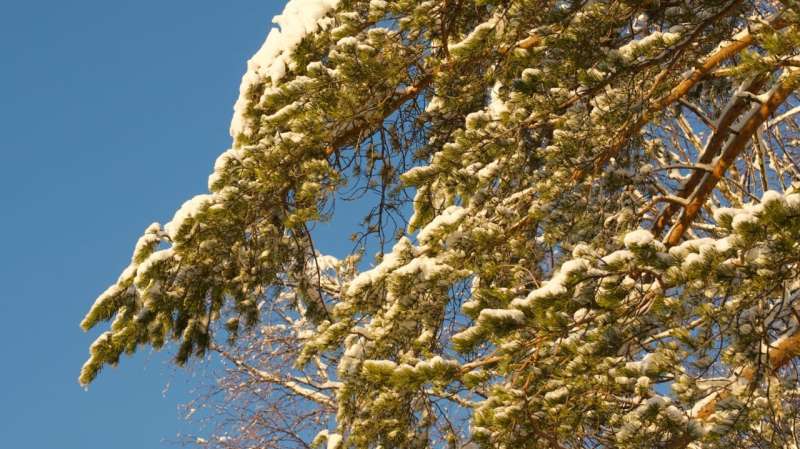This article has been reviewed according to Science X's editorial process and policies. Editors have highlighted the following attributes while ensuring the content's credibility:
fact-checked
peer-reviewed publication
trusted source
proofread
Conifer needles found to consume oxygen when times are hard

Plants give us oxygen through photosynthesis—this is commonly taught in school. An international research team has now shown that, particularly in early spring when low temperatures coincide with high light, conifer needles consume—not produce—oxygen by using an ancient mechanism. The results were published in Nature Communications.
Plant photosynthesis, that occurs in the thylakoid membranes inside the chloroplasts of the leaves, release oxygen to our atmosphere and produce carbohydrates. Animals and fungi perform the opposite reaction and consume oxygen during respiration. Plants also respire, for example during the night and in the roots but during the day leaves and needles are true "oxygen factories."
Tatyana Shutova, senior research engineer at Umeå University, was very surprised while testing a new instrument to measure the oxygen released by these needles. She found that green thylakoid membrane samples from pine and spruce needles in the winter behaved opposite to summer needles. They consumed oxygen in the light.
"I thought there was something wrong with the instrument and repeated the measurements," said Tatyana Shutova, who works in Stefan Jansson's group at Umeå Plant Science Center. "The results were consistent over several winters and for both Scots pine and Norway spruce."
Researchers puzzled by the results
The samples Tatyana Shutova analyzed were collected by Pushan Bag who studied in his Ph.D. project at Umeå University how conifers could stay green during the long and cold boreal winters.
Puzzled by the results, the researchers set out to investigate the phenomena using a combination of sophisticated techniques. Together with Dmitry Shevela from Umeå University and Johannes Messinger, professor at Uppsala University, they used a specialized instrument that allowed them to distinguish between oxygen produced and consumed.
"To pinpoint where exactly the oxygen was taken up, we took an elimination approach to opt out other pathways that could potentially consume oxygen and were finally left with only one option: the oxygen consumption occurred around photosystem I—one of the two main photosynthesis complexes—and involved a special type of protein called Flavodiiron proteins" explained Pushan Bag, now Human Frontiers long term fellow at University of Oxford.
The team also included Sanchali Nanda and Jenna Lihavainen from Umeå university and Alexander Ivanov from University of Western Ontario, London, Canada.
Interesting parallels between studies
Flavodiiron proteins are used by algae and cyanobacteria to protect their photosynthetic apparatus from damage by excess light. Flowering plants have lost them during their evolution but conifers not, and this study suggest that they contribute to photoprotection also in conifers.
In a previous study that the researchers published three years ago in the same journal they identified another mechanism—a kind of shortcut between photosystem II and I that is used by conifers to protect their photosynthetic apparatus.
"There are interesting parallels between these two studies," says Stefan Jansson, professor for plant cell- and molecular biology at Umeå University who led the project. "In both cases, conifers have retained a process that is present in lower plants but that flowering plants have lost or do not utilize to the same extent. Conifers seem to have adopted a 'better safe than sorry' strategy, which may be less efficient under optimal conditions, but makes them more competitive in a harsh climate."
More information: Pushan Bag et al, Flavodiiron-mediated O2 photoreduction at photosystem I acceptor-side provides photoprotection to conifer thylakoids in early spring, Nature Communications (2023). DOI: 10.1038/s41467-023-38938-z
Journal information: Nature Communications
Provided by Umea University



















